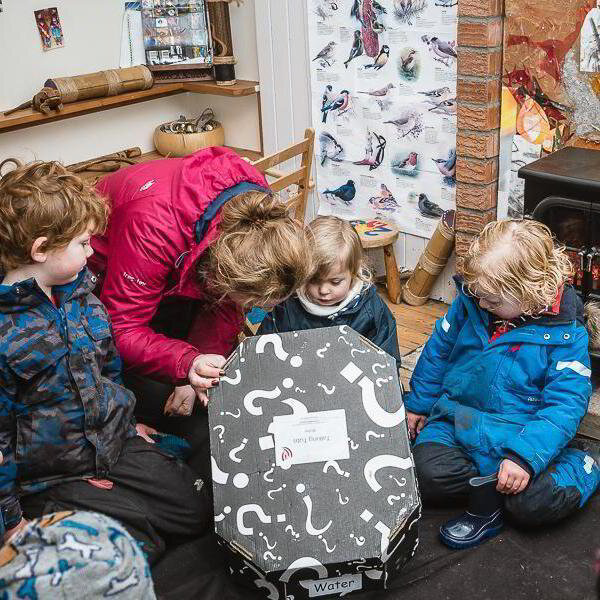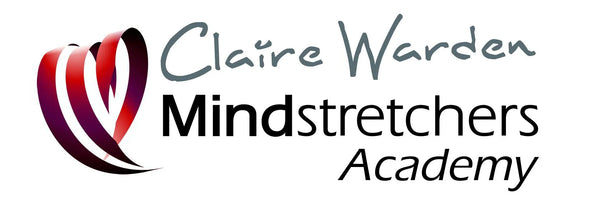
Talking Tubs™ – The Spark for Child-Led Planning with Floorbooks®
Dr Claire WardenMost early years settings are familiar with themed boxes or discovery baskets. But Talking Tubs™ work differently than traditional resources.
They're not designed to deliver predetermined learning outcomes. They're crafted to ignite authentic questions that children genuinely want to explore.
The difference is profound.
A traditional autumn focus might include plastic pumpkins, laminated leaf shapes, and adult-led activities about seasons.
In these situations the learning objective is normally decided in advance.
You encourage children to identify autumn colors, count the seasonal objects they find inside, and practice the associated vocabulary.
In contrast, a Talking Tub™ would contain real autumn materials – different sized acorns, varying types of bark, seed pods that rattle, and leaves of different shades and color.
It creates space for children's own thoughts to emerge, where the learning outcomes develop organically from their own genuine wonderings.
Research consistently demonstrates that children's intrinsic motivation and engagement levels increase when they follow investigations based on their own curiosity rather than predetermined topics and themes.
You’ll hear children asking questions like "Why do some acorns feel heavier than others?" – just one simple question that could lead to a number of investigations about weight, density, biology, or maths.
This is planning WITH children, and not just FOR them. Start with a child’s genuine curiosity and build learning experiences around it.
How to Make an Effective Talking Tubs™
A successful Talking Tub™ brings together specific elements to maximize their potential for generating authentic inquiry:
Authentic materials
Real objects provide sensory richness and natural variations that other alternatives can’t provide. Natural materials invite genuine exploration through their inherent complexity and unpredictability.
Multiple entry points
An effective collection must accommodate different learning styles by offering visual, tactile, auditory, and kinesthetic engagement opportunities, ensuring accessibility for diverse learning approaches.
Questions, not answers
Materials should raise questions and inspire wondering rather than providing predetermined information. Objects with interesting features or unexpected properties encourage deeper investigation.
Cultural relevance
The most powerful provocations connect to children's lived experiences while introducing new elements that extend understanding and broaden perspectives.
Sustained exploration
Collections must contain sufficient variety to support extended investigation over multiple sessions rather than brief examination periods.
How Talking Tubs™ Connect to The Floorbook Approach®
The combination of Talking Tubs™ with The Floorbook Approach® creates a comprehensive system for real child-led planning that accurately captures learning processes.
When practitioners present Talking Tub™ materials, they use Floorbooks® to document children's immediate responses, authentic questions, and developing theories in real-time.
Verbatim Documentation
By capturing the children's exact language and thinking without adult interpretation, the integrity of their original observations and hypotheses are maintained.
Inquiry Development
The full progression from their initial curiosity through to their full investigation is captured in real-time. This provides rich and comprehensive evidence of the learning process.
Collaborative planning foundation
The responses documented in the Floorbook® become the foundation of your planning for future learning experience which ensures curriculum development builds on the interests of your children rather than assumptions.
This means that documentation doesn’t just serve compliance – it serves learning. It transforms individual moments of curiosity into entryways for in-depth inquiry.
Benefits and Impact
Settings that implement Talking Tubs™ with The Floorbook Approach® consistently demonstrate benefits across multiple areas.
It’s been reported that children sustain attention significantly longer when exploring materials that generate their own questions compared to others.
Open-ended provocations encourage children to form hypotheses, make predictions, and logical reasoning that structured activities can rarely manage.
Over time, settings report significant changes in educational culture as children develop increased confidence in expressing ideas, enhanced questioning skills, and improved collaborative abilities when their authentic voices are consistently valued.
Practitioners develop improved skills in recognising and following children's genuine interests while meeting accountability standards.
The approach demonstrates that child-led learning and educational quality are complementary rather than competing priorities, providing evidence that authentic engagement generates better outcomes.
Getting Started
Ready to spark authentic inquiry in your setting?
Our Introduction to Talking Tubs™ course provides practical guidance for selecting materials, facilitating meaningful conversations, and documenting children's genuine responses.
You'll discover how to create provocations that generate authentic curiosity, capture children's thinking effectively, and use their documented interests to guide responsive curriculum development.
Start with Introduction to Talking Tubs™
Join our Planning with Floorbooks® webinar on November 14th to discover how provocative materials become foundations for curriculum planning. Register here
